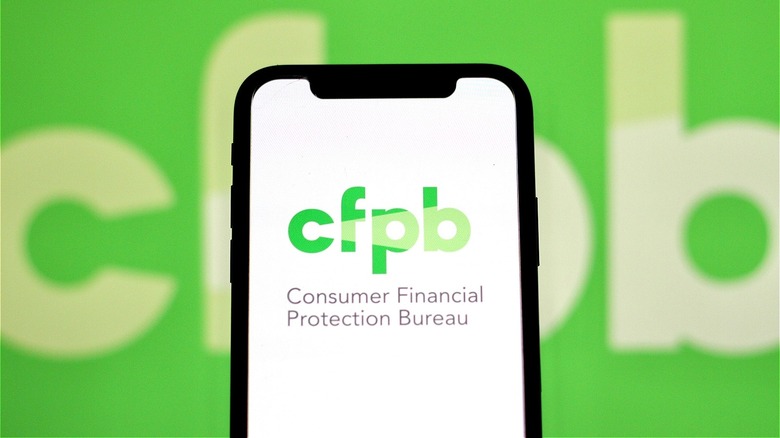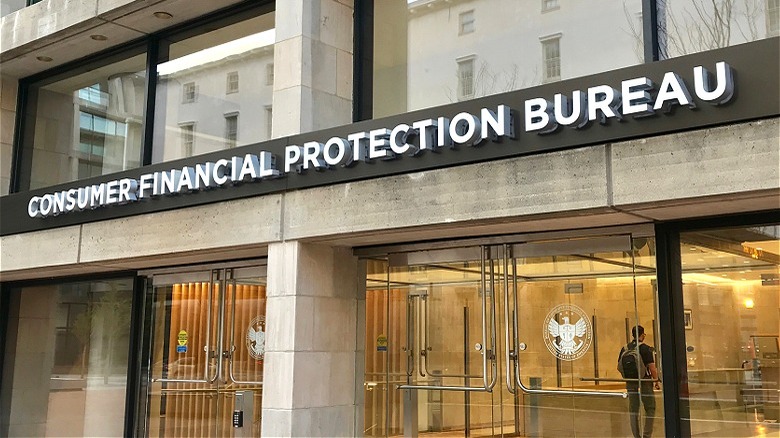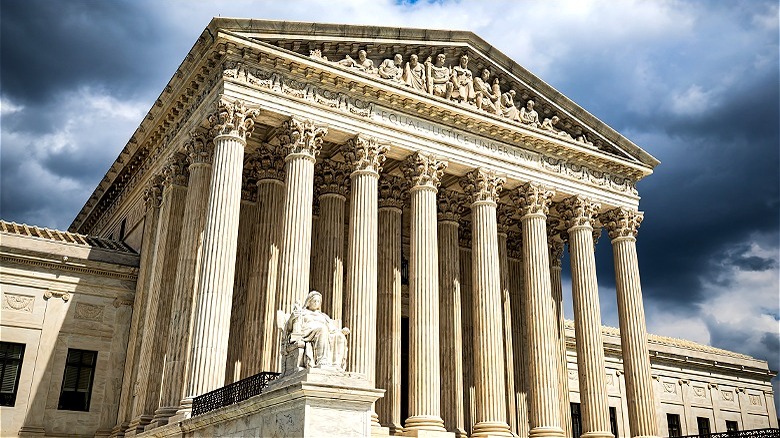What The CFPB's Recent Supreme Court Victory Means For Consumers
Late spring brings a glut of Supreme Court decisions, many of which have the ability to drastically change people's lives. While some Supreme Court cases get more attention than others, one case in particular was especially important for defending consumer protections. In May, the Supreme Court rejected a conservative-led legal challenge that sought to defund the Consumer Financial Protection Bureau (or CFPB), one of the most significant independent agencies operating today. The case could have not only defunded the agency, but also affected or undone every single mortgage, credit card, and loan regulation action the agency has taken in its 13 years of operation.
Perhaps the most concerning element of the case brought against the CFPB is who was behind it. The case was brought by corporate trade associations that represented payday lenders and credit-access businesses. In other words, the case was brought by the groups that fall directly under the oversight of the Consumer Financial Protection Bureau. In fact, the CFPB previously led multiple regulatory actions (including fines and refunds) against many of the exact companies that were directly behind this case.
All this is to say that industries operating in predatory ways, such as payday lenders (a reminder: think twice before taking out a payday loan), attacked the constitutionality of the agency responsible for overseeing them rather than changing their questionable practices. While the Supreme Court ultimately ruled against their attempt, it's increasingly important to understand how and why this case was brought forward — given that there are likely to be similar challenges in the future from industries unhappy with the CFPB's oversight.
Why the CFPB is important
For starters, the CFPB was formed following the 2007–2008 financial crisis. While consumer financial protection authorities technically already existed, they were spread across seven different federal agencies. The breadth and scope required to oversee the entire market largely kept consumer financial protections from receiving the primary focus it required, which some say contributed to the 2008 crisis. Congress designed the CFPB as an entirely independent regulator that could operate free from any specific political bias or interference and in July 2010, the CFPB was formally created as part of the Dodd-Frank Wall Street Reform and Consumer Protection Act. The Consumer Financial Protection Bureau's sole focus is to oversee and regulate consumer financial markets through the direct supervision of consumer financial products, services, and providers.
From warning consumers about the dangers of digital wallets like PayPal (like if it's safe to store your money in there) to enforcing protection laws to enhancing financial education, the CFPB has positively impacted millions of Americans. According to its reports, the bureau has sent over 5.6 million consumer complaints directly to companies seeking responses, and it's collected over $4.8 billion in civil money penalties from companies and individuals who violated the law. (Note, that money was put into its civil penalty fund for victim relief).
Further, the Consumer Financial Protection Bureau removed at least one credit report medical collection for 22.8 million people thanks to its push to remove medical collections under $500 from consumer credit reports. It also estimates it'll save consumers $6.1 billion every year thanks to the recent change it implemented in banks' overdraft and non-sufficient funds (NSF) fee policies.
The source of CFPB funding
The crux of this most recent case was focused on how the CFPB is funded. Going back to Congress' original intention of the CFPB operating independently and, as such, free from political interference, the agency has a unique funding mechanism it derives from the Federal Reserve (the agency that is indirectly behind interest rates). The Fed operates as an independent financial agency that's funded from a combination of fees levied on financial institutions and interest earned on investments. The Board of Governors of the Federal Reserve then transfers funds directly to the Consumer Financial Protection Bureau, without requiring congressional oversight or permission.
Those seeking to undercut the CFPB attacked the agency's funding independence, arguing that it violated the appropriations clause of the Constitution ("no money shall be drawn from the Treasury, but in consequence of appropriations made by law"). Specifically, these detractors took issue with the fact that the CFPB's funding source is outside of the appropriations process (and is, therefore, protected from any potential congressional meddling that could benefit the private corporations targeted by CFPB authority).
However, in its ruling, the Supreme Court found that Congress' authorization — the one that allows the CFPB to draw its money from the earnings of the Federal Reserve System — did, in fact, satisfy the appropriations clause. This means that, for now, the Consumer Financial Protection Bureau is able to continue enforcing regulation for the betterment of consumers across the country. This said, this latest case wasn't the first and certainly won't be the last one brought forward in an attempt to hinder the CFPB's oversight abilities.


